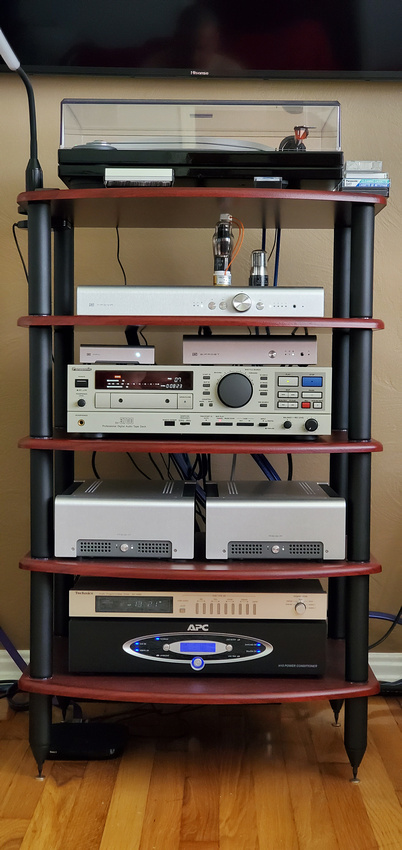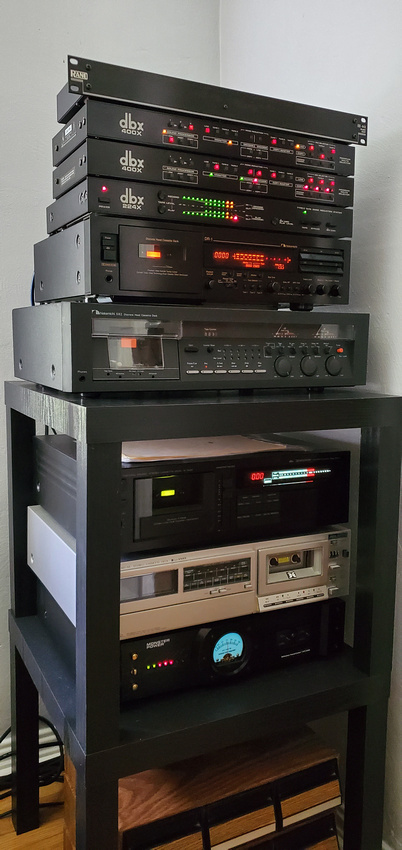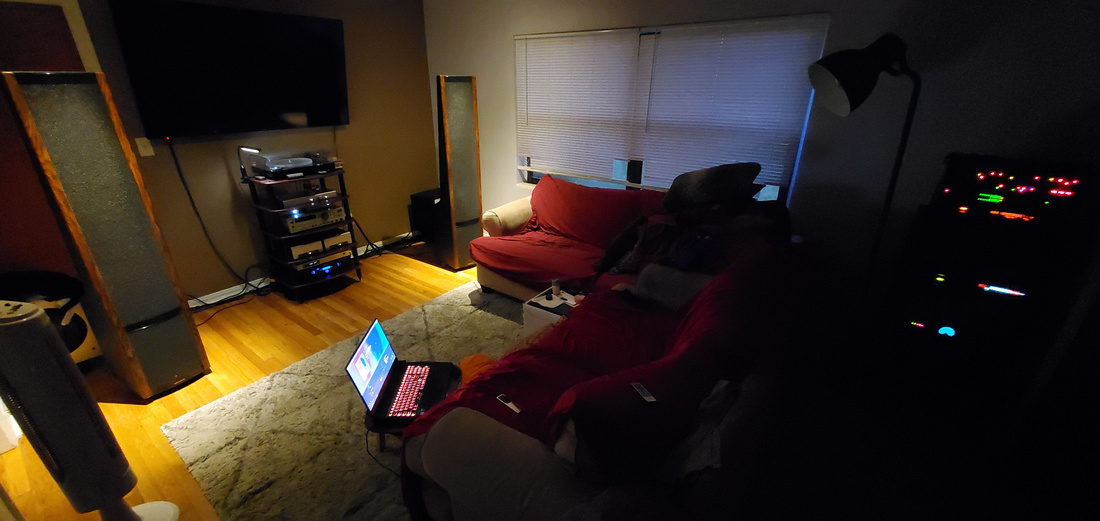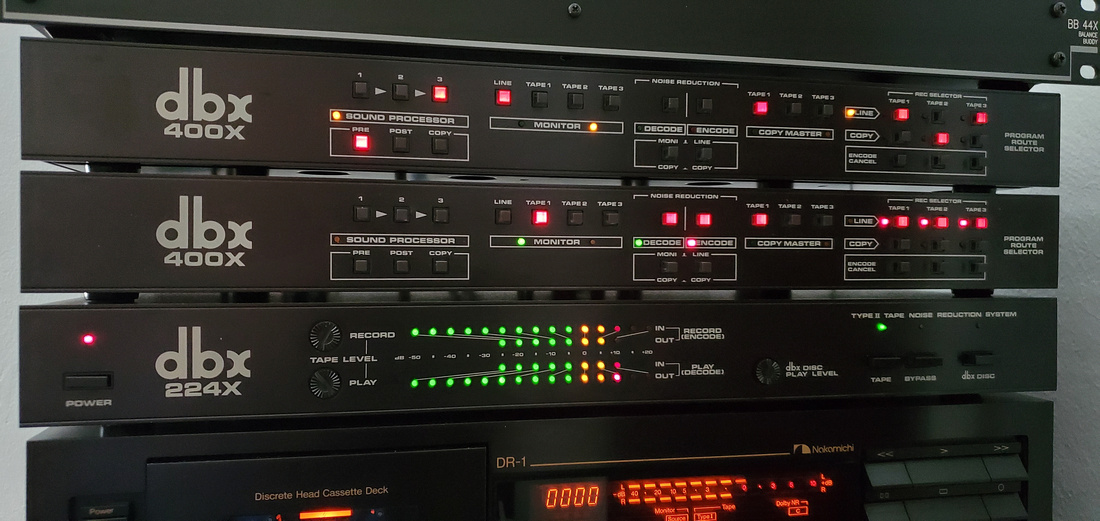[1] DAT is LPCM which is different than PCM. PCM is pulse coded modulation, whereas LPCM is linearpulse coded modulation. Linear means that the values are linearly spaced - the values are directly proportional to the signal amplitude
[2] So, anything that has the meaning to record in LPCM can take huge advantage of Magnetism.
[3] Because the Amplitude are infinitely accurate rather than guesstimate modulated like PCM from PC or the modern PCM encoding.
[4] This was why I called DAT is a perfect hybrid technologies from the point of view of Digital.
[4a] Instead of typical PCM where the amplitudes and reconstructions of the square waves have to be modulated to become, the magnetism mechanic of DAT tapes already did the works.
1. Correct. However, what difference does it make? Sure, DAT is LPCM but so is CD and pretty much all lossless digital audio formats (with the exception of DSD)!
2. LPCM takes no more "advantage of magnetism" on a DAT tape than it does on a HDD and in fact there are better (faster and/or more reliable) media types which don't involve magnetism on which to store LPCM, CD or SSD for example.
3. No, there is no amplitude with digital audio, it's just zeros and ones (bits) that represent amplitude values and obviously we have a limited number of bits, 16bits in the case of CD and DAT. As you yourself quoted, with LPCM "the values are directly proportional to the signal amplitude", NOT "infinitely accurate"! However, we do not need infinitely accurate digital values in order to achieve audibly perfect analogue signal reconstruction, which is the whole point of digital audio, it wouldn't work otherwise! FURTHERMORE, as just mentioned, there is no "rather than", wav and aiff files ("PCM from PC or the modern PCM encoding"), redbook CD, AES3, DVD, BluRay, HDMI, DCP, LaserDisk, RF64 and DAT, are all LPCM!
4. Obviously that statement is incorrect. As just explained, DAT is NOT a "hybrid technology" it's exactly the same basic technology as CD and computer wav and aiff files, the only difference is that the zeroes and ones are stored on magnetic tape rather than magnetic platters (HDDs).
4a. No, there is no "reconstructions of the square waves" and the magnetic mechanism of DAT does not "already did the work". What you seem to be describing is an analogue conversion, NOT a digital to analogue conversion! Digital audio is just zeros and ones, the difference between a one and a zero is represented by a polarity difference in the magnetic field on DAT tapes, floppy drives and HDDs (or by pits and lands on optical media for example). The output of all the different media types is ultimately an electric signal with an alternating high and low voltage which the DAC chip converts back into "ones" and "zeros" respectively and THEN "does the work" of reconstruction. You seem to be getting confused between analogue and digital.
[1] I never said anything I posted were facts.
[2] I said that I observed the differences and it sounds better than what the new digital system has and that is that.
[3] All signals digital would have to come out as Direct Stream Digital first before it comes out to be analog, so Ofcourse it has 1 bit converter
[4] What else would it be ? PCM and digital amplifications instead was what you meant ? Similar to A class D amp ?
[5] The SV-3800 Pro-DAT features with a 1-bit, 64X oversampling A-D converter.
1. If that's true then I'm sorry but I don't understand much of what you posted. For example, when you stated "The idea of why I am interested in DAT tapes is that it is a hybrids between digital and analog. It doesn’t rely all on the algorithms to generate and reconstruct the pulses. It utilizes magnetism instead, and at the speed that it has, the density is pretty awesome. Just as you mentioned, DAT tapes has no wow/flutters." - If you never said anything you posted "were facts" then: "The idea of why you are interested in DAT tapes is that it is NOT a fact that DAT is a hybrid. And, you are not saying it's a fact that DAT doesn't rely on the algorithms, utilises magnetism instead or have speed or density this is pretty awesome" - Which I don't understand and seems to be the opposite of what you actually stated.
2. The only rational explanation is that there must have been some error in your observation because there is no difference, it's exactly the same PCM (LPCM) as found for example in wav files. The newer "digital systems" (such as computer wav files) are actually technically superior to DAT, because in addition to the 16bit 48kHz max limit of DAT, they also allow for LPCM with greater bit depths and sample rates, although this results in no audible improvement for consumer distribution.
3. Clearly that cannot be true. The storage/playback of Direct Stream Digital (DSD) first became available in 1999, 12 years after DAT was released! And as you yourself have quoted, the digital signal on DAT tapes is LPCM, not DSD. What "comes out" of a DAT tape is 16bit LPCM, then, depending on the DAC (either internal or external) that 16bit LPCM signal maybe converted by the DAC's converter chip into an oversampled delta/sigma (DS) signal.
4. Sorry I don't understand, what "digital amplifications" and I don't see the similarity/connection with analogue signal amplifiers?
5. As far as I'm aware, pretty much ALL professional ADCs from the beginning of the 1990s onwards initially converted the analogue input signal to digital using one or a handful of bits at very high sampling (oversampled) rates. However, this is NOT what the ADC chips actually output, after initial digitization the signal is converted into LPCM (at the selected bit depth/sample rate) in a process called "decimation". Of course there could be no other option until 1999 because there was no way to store a 1bit 64x oversampled signal and, this is exactly how professional PCM (LPCM) ADCs still work today, although 256x or 512x oversampling became the norm in the 2000's, which provides marginally better noise performance. So, the difference you describe does not exist, it's exactly the same basic technology as today's technology but with slightly worse performance, not better.
Again, why don't you just ask if you don't know, instead of making incorrect factual statements that you then say were not factual, which is extremely confusing and misleading? So for example, try asking: "What's the difference between the digital data stored on a DAT tape compared to the digital data stored in a wav file on a computer drive?" instead of incorrectly stating that "DAT is a different, hybrid technology compared to wav files on a computer drive" and then later that "you don't really know how DAT works and want to learn".
G










